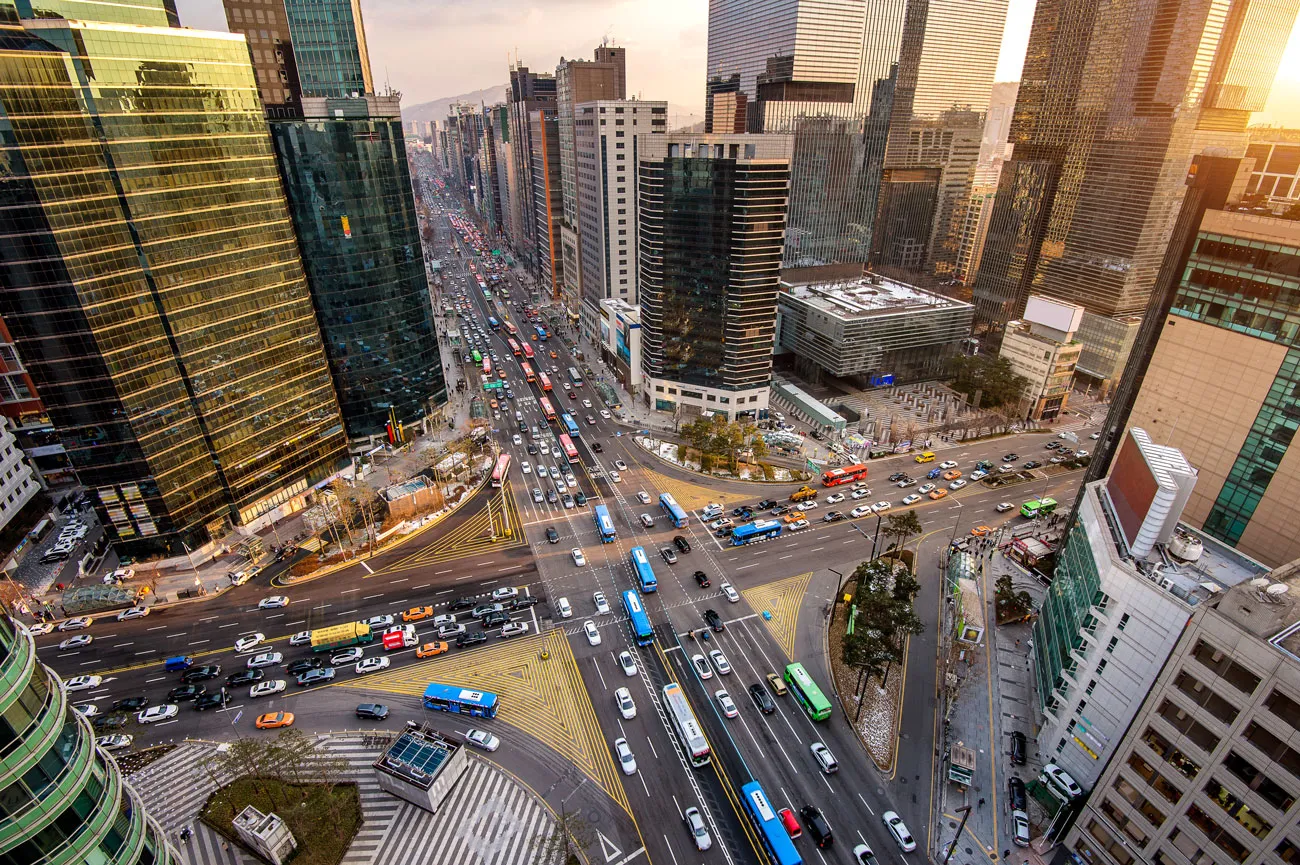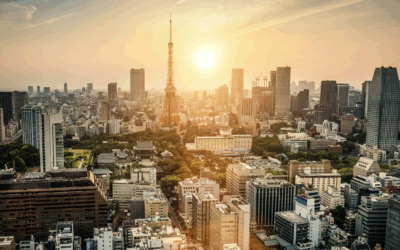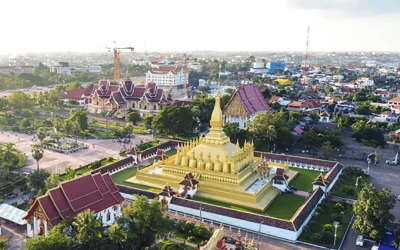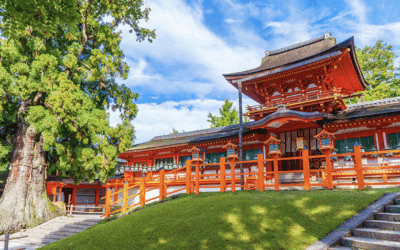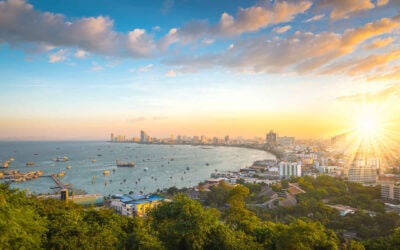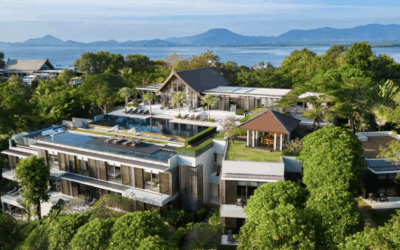With its blend of cutting-edge modernity and rich cultural heritage, Seoul offers a unique real estate market that appeals to both local and international buyers.
However, buying property in Seoul certainly isn’t without its challenges.
The city’s high property prices, coupled with South Korea’s slowing economy and geopolitical tensions with the north, present significant hurdles for foreign investors looking to diversify their portfolios.
Despite these challenges, Seoul’s real estate market still offers compelling investment opportunities across various neighborhoods, catering to different budgets, lifestyles, and investment strategies.
In this guide, we’ll explore the best areas in Seoul for property investment, taking into account factors such as price per square meter, rental yields, resident profiles, and future growth prospects.
What’s the Allure of Seoul’s Real Estate Market?
Before delving into specific neighborhoods, it’s essential to understand what makes Seoul’s real estate market so appealing to investors.
The city’s status as a global hub for technology, innovation, and economic activity attracts a diverse range of buyers, including professionals, expatriates, and international investors.
Seoul’s advanced infrastructure, efficient public transport system, and high standard of living further contribute to its desirability as a real estate investment destination.
The city’s reputation for safety, cleanliness, and world-class healthcare and education systems also make it an attractive option for families and long-term residents.
Moreover, Seoul’s property market has demonstrated remarkable resilience, even in the face of global economic fluctuations.
The city’s real estate prices have maintained a steady upward trajectory, driven by factors such as population growth, urbanization, and the enduring popularity of Korean culture worldwide.
Budget-Friendly Neighborhoods
For investors working with a limited budget, Seoul offers several neighborhoods that provide excellent value for money without compromising on location or growth potential.
Three such areas are Guro-gu, Nowon-gu, and Dobong-gu.
Guro-gu
Located in southwestern Seoul, is known for its affordability and growing tech industry.
With an average price per square meter lower than more central areas, Guro-gu offers a mix of older apartments and new constructions, catering to a diverse resident profile that includes middle-income families and working professionals.
The area’s strengths lie in its strong community feel and improving infrastructure, but its distance from central Seoul and less vibrant nightlife may be seen as drawbacks by some investors.
Nowon-gu
Situated in northeastern Seoul, strikes a balance between affordability and family-friendly living.
With competitive property prices and a mix of apartments and single-family homes, Nowon-gu attracts families and students seeking a peaceful environment and good schools.
The area’s proximity to green spaces and universities are its main strengths, although it may lack the dynamic energy and entertainment options found in more central districts.
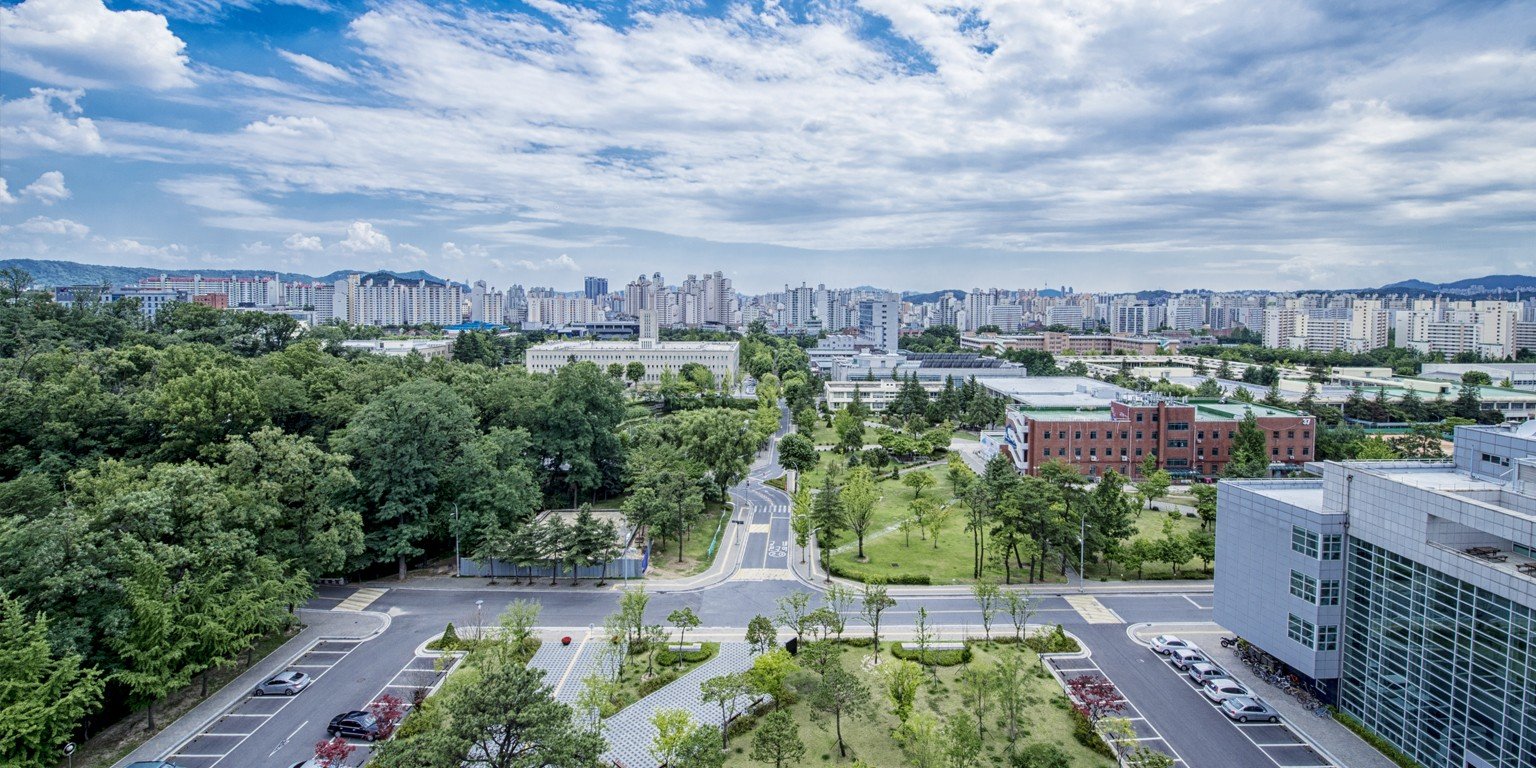
Seoul National University of Science and Technology, also known as SeoulTech, is located in Nowon-gu. Their campus is the 3rd largest campus in Seoul.
Dobong-gu
Located on the northern edge of Seoul, offers the lowest property prices in the city.
While somewhat overlooked in favor of more developed areas, Dobong-gu presents an opportunity for investors to capitalize on its ongoing development and improved transport links.
The district’s diverse housing market, ranging from older apartments to new developments, caters to a mix of elderly residents and younger families drawn to its affordability and laid-back lifestyle.
Dobong’s distance from central Seoul and limited entertainment options may be seen as weaknesses by some investors though.
Popular and Upscale Districts
For investors seeking high-end properties and premium locations, Seoul has no shortage of upscale neighborhoods.
These areas are characterized by their central locations, luxurious amenities, and strong demand from affluent residents and expatriates.
Gangnam-gu
With an average price per square meter exceeding 30 million won, is synonymous with luxury and prestige in Seoul.
Home to high-end shopping, dining, and entertainment options, Gangnam attracts wealthy professionals, celebrities, and business executives.
The Gangnam area’s strengths include its vibrant atmosphere, excellent transport links, and unparalleled status.
Yet the high cost of living and dense development may be seen as drawbacks by some investors.
Despite this, Gangnam is expected to maintain its popularity and command premium prices due to its iconic reputation and continuous development.
Seocho-gu
Another upscale neighborhood, offers a more tranquil and family-oriented environment.
With an average price per square meter of around 25 million won, Seocho boasts spacious apartments, excellent schools, and abundant green spaces.
The area’s safety, educational facilities, and recreational amenities make it highly attractive to affluent families and professionals seeking a balanced lifestyle.
Seocho may be perceived as less dynamic compared to other upscale districts, and its high cost of living can be a barrier for some investors.
Nonetheless, Seocho’s enduring appeal as a prestigious and family-friendly neighborhood suggests its property values will remain stable regardless.
Yongsan-gu
A unique blend of traditional and modern Seoul, is known for its cultural landmarks, historical significance, and mix of housing options.
With prices per square meter ranging from 20-25 million won, Yongsan attracts a diverse resident profile, including expatriates, professionals, and families.
The area’s strengths include its central location, rich cultural heritage, and international vibe.
Traffic congestion and noise may be seen as weaknesses by some investors. Still though, Yongsan’s ongoing development and cultural richness suggest its real estate market will remain vibrant and appealing to a wide range of buyers.
Emerging Hotspots in Seoul
In addition to established neighborhoods, Seoul also has several up-and-coming areas that offer exciting investment opportunities.
These emerging hotspots are characterized by their growing popularity, unique character, and potential for future appreciation.
Mangwon-dong
Once a quiet residential area, has seen a surge in popularity among young professionals and artists in recent years.
Driven by its unique blend of traditional markets and trendy cafes and shops, Mangwon offers more affordable property prices compared to established upscale areas.
The neighborhood’s strengths include its vibrant food scene, artistic vibe, and strong sense of community.
Mangwon can be noisy and crowded, especially on weekends. But as the district continues to develop its distinct identity, it should experience steady price appreciation – or at the very least stability compared to other locations in Seoul.
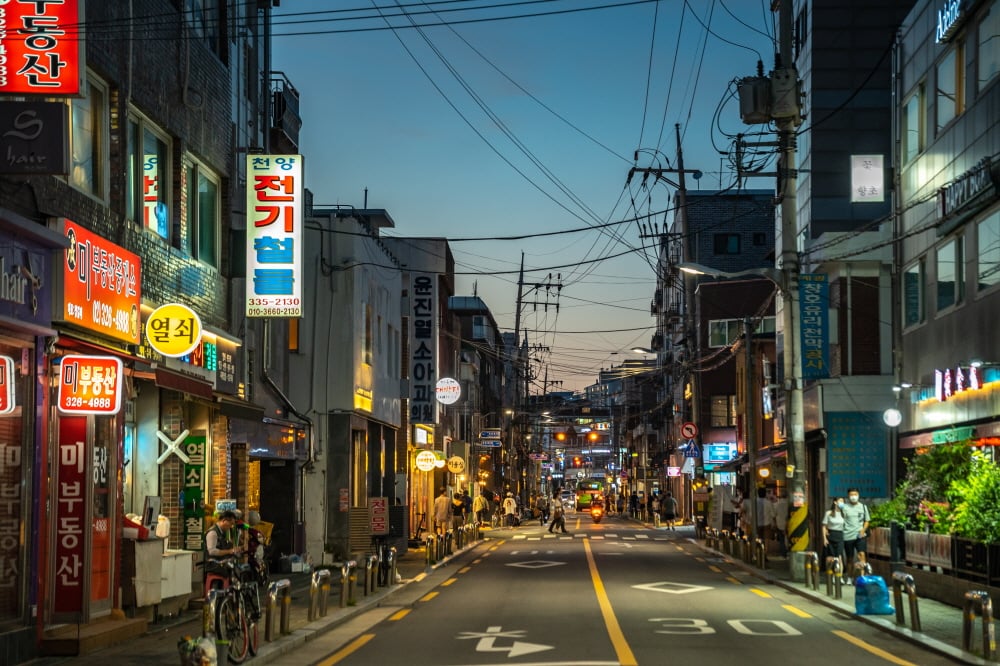
Mangwon-dong’s food scene attract both tourists and locals to spend time in the area, exploring traditional delicacies as well as up-and-coming cafes.
Ikseon-dong
A charming neighborhood known for its traditional hanok houses, has undergone a renaissance with the influx of hip cafes, boutiques, and galleries.
Attracting tourists, young professionals, and creatives, Ikseon-dong offers a unique living experience that blends old and new Seoul.
With more affordable property prices compared to upscale districts, the area’s appeal lies in its cultural richness and strong sense of community.
Gentrification and loss of traditional character are concerns for some investors. Ikseon-dong’s growing popularity and unique charm make it an attractive option for those seeking a neighborhood with a distinct personality though.
Euljiro
An industrial area undergoing transformation into a creative hub, has gained attention from artists, entrepreneurs, and young professionals.
With property values currently lower than more established areas but rising as the neighborhood gains popularity, Euljiro offers an opportunity for investors to capitalize on its growth potential.
The area’s strengths include its unique industrial aesthetic, growing creative community, and increasing number of trendy eateries and workshops.
However, Euljiro may lack some residential amenities and retain a rough-around-the-edges feel.
As more creative spaces and businesses move in, Euljiro is expected to continue its upward trajectory, particularly among young, creative professionals.
Locations in Seoul with Strong Rental Demand
For investors primarily interested in generating rental income, Seoul has several neighborhoods that boast strong demand from various tenant profiles.
These areas offer attractive rental yields and the potential for consistent cash flow.
Gangnam-gu
As mentioned earlier, is a popular choice among professionals and expatriates due to its prime location and proximity to business and entertainment districts.
With an average rent of 2.5-3 million KRW per month for a two-bedroom apartment, Gangnam offers rental yields of around 3-4%.
To maximize rental income, investors should focus on properties near popular subway stations or business hubs.
With that said, the high initial investment of buying property in Gangnam and competition from luxury developments may be seen as drawbacks.
Mapo-gu
Particularly the Hongdae area, is highly sought-after by students and young professionals for its vibrant nightlife, cultural attractions, and proximity to universities.
Smaller, affordable units in Mapo-gu, such as one-room studios or two-bedroom apartments, can command rents of 1-1.5 million KRW per month, with rental yields of 3.5-4.5%.
To capitalize on the strong rental demand, investors should consider properties near universities, public transport, and popular entertainment spots.
Yet he potential for higher tenant turnover and maintenance issues due to the younger demographic should be taken into account here.
Songpa-gu
Known for its family-friendly atmosphere and proximity to attractions like Lotte World Tower, attracts families and professionals seeking larger living spaces and good amenities.
With average rents for a three-bedroom apartment ranging from 2-2.5 million KRW per month, Songpa-gu offers rental yields of around 3-3.5%.
Properties near prestigious schools, parks, and the Han River are particularly desirable.
Keep in mind the higher initial investment required for larger apartments and the slower pace of rent increases compared to smaller units may be seen as drawbacks by some investors.
Top Neighborhoods for Short-Term Rental
With Seoul’s thriving tourism industry, investors may also consider properties in neighborhoods popular among short-term visitors and Airbnb.
These areas offer the potential for higher nightly rates and occupancy levels, although investors should be aware of the increased competition and regulatory requirements associated with short-term rentals.
Myeongdong
A bustling shopping and tourism district, Myeongdong attracts a steady flow of visitors seeking convenient accommodations near popular attractions and transport hubs.
The area’s small apartments and studios cater to tourists and business travelers, with average nightly rates ranging from 60,000 to 100,000 KRW.
To maximize income, investors should focus on well-equipped properties close to major shopping areas and subway stations.
However, the potential for seasonal fluctuations in occupancy rates and the need for regular maintenance may be seen as challenges.
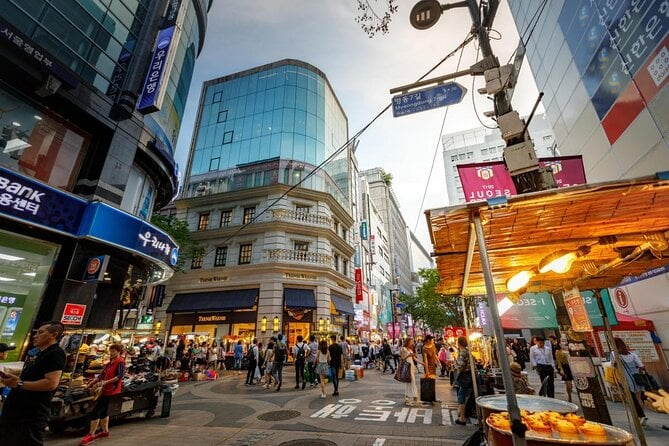
The street of Myeongdong is often crowded with tourists. From the cathedral to the shopping street, there are many things to do in the area.
Itaewon
Known for its international vibe and vibrant nightlife, is popular among expatriates and tourists seeking a unique cultural experience.
The area offers a mix of apartments and guesthouses, with average nightly rates ranging from 70,000 to 120,000 KRW.
Properties with distinctive features or proximity to popular dining and entertainment spots can command higher rates.
Still, noise levels and the potential for high tenant turnover in Itaewon may be concerns for some investors.
Gangnam-gu
In addition to its strong long-term rental demand, also attracts affluent short-term visitors, particularly business travelers.
Luxury apartments and high-end studios in Gangnam, equipped with modern amenities and convenient access to business districts, can command nightly rates of 80,000 to 150,000 KRW.
To succeed in Gangnam’s short-term rental market and Airbnbs in Seoul, investors should focus on properties near major business centers and offer premium facilities.
However, the high level of competition and the need for continuous investment to maintain luxury standards may be seen as challenges.
Where Should You Buy Property in Seoul?
Seoul’s real estate market presents unique challenges – especially as a foreign investor. Yet it still offers a wealth of investment opportunities across a diverse range of neighborhoods.
From budget-friendly options in Dobong to prestigious districts like Gangnam and Yongsan, investors can find properties that align with their goals and risk tolerance.
Emerging hotspots such as Mangwon, Ikseon, and Euljiro present exciting prospects for those seeking up-and-coming areas with strong growth potential and unique character.
Meanwhile, neighborhoods like Gangnam, Mapo, and Songpa offer attractive rental yields and consistent demand from various tenant profiles.
For investors interested in short-term rentals and Airbnb, Myeongdong and Itaewon are able to capitalize on Seoul’s thriving tourism industry, although increased competition and regulatory requirements should be carefully considered.
Finally, it’s crucial to recognize that investing in Seoul’s real estate market isn’t without its risks.
Remember: as a global investor, you have the ability to buy property anywhere in the world – or even other cities in Korea. Consider your options elsewhere in Asia before deciding on real estate in Seoul.
FAQs: Top Locations in Seoul
What's the Most Expensive District in Seoul?
Gangnam-gu is consistently the most expensive district in Seoul for real estate.
With an average price per square meter exceeding 30 million won, Gangnam-gu is synonymous with luxury and prestige. It attracts wealthy professionals, celebrities, and business executives due to its high-end shopping, dining, and entertainment options.
Where is the Cheapest Place to Buy Property in Seoul?
Dobong-gu, located on the northern edge of the city, generally offers the lowest property prices in Seoul.
While somewhat overlooked in favor of more developed areas, Dobong-gu presents an opportunity for investors to capitalize on its ongoing development and improved transport links. The district caters to a mix of elderly residents and younger families drawn to its affordability and laid-back lifestyle.
Which Area in Seoul Has the Highest Rental Yields?
Mapo-gu, particularly the Hongdae area, offers some of the highest rental yields in Seoul. Smaller, affordable units in Mapo-gu, such as one-room studios or two-bedroom apartments, can command rents of 1-1.5 million KRW per month, with rental yields of 3.5-4.5%.
This area is highly sought-after by students and young professionals due to its vibrant nightlife, cultural attractions, and proximity to universities.
Can Foreigners Own Real Estate in Korea?
Yes, foreigners can own real estate in South Korea. The country allows foreign land ownership on a freehold basis, which is relatively rare in Asia. This makes South Korea, and particularly Seoul, an attractive option for international investors looking to diversify their property portfolios.
However, investors should be aware of the associated taxes and fees, including stamp duty, VAT, housing bonds, registration tax, and acquisition tax.

